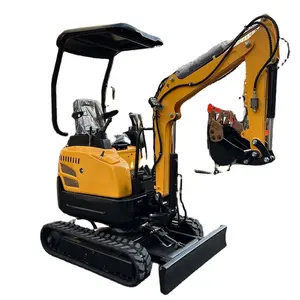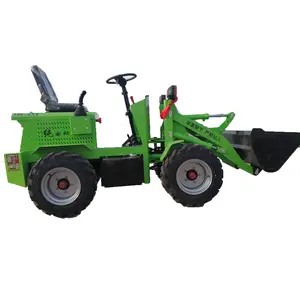Popular in your industry














Top categories
About parking lot line painter
Introduction
Parking lots, often overlooked, play a crucial role in shaping our urban landscapes. They are not just functional spaces for vehicle storage, but canvases where art and science intersect. This article delves into the importance of parking lot line painting, exploring its artistic and scientific aspects. We will discuss the aesthetics of parking lot design, the impact of color choices, the equipment used, and the influence of weather and environmental factors. We will also touch on the importance of safety and compliance standards, including accessibility compliance and local regulations. Finally, we will look at innovative case studies that demonstrate the transformative power of effective line painting.
The Importance of Parking Lot Line Painting
Parking lot line painting is crucial for several reasons. Over time, UV rays and precipitation can fade parking lot striping paint, making it less visible. This can lead to difficulties in finding suitable parking and may even result in door dings. Moreover, faded lines can compromise safety, as they are essential for marking pedestrian crossings, fire lanes, and traffic flow. Lastly, well-maintained parking lot lines can enhance the curb appeal of your business, attracting more customers. Therefore, investing in proper parking lot line painting is a wise decision for any business.
The Art of Parking Lot Line Painting
Parking lot line painting, or striping, is an art that combines aesthetics and functionality. It involves the use of specialized equipment like asphalt striping machines, which spray paint in a fan pattern for uniformity. These machines vary in price, performance, and capacity, but are simple to operate. The artistry comes into play when creating straight lines, sharp turns, or gradual curves. The machine's maneuverability is key in these tasks, ensuring professional-looking results. The choice of equipment can greatly influence the quality, quantity, and efficiency of the striping job.
Visual Aesthetics and Design Principles
The aesthetics of a parking lot can significantly impact its overall appeal. While parking lots are a necessity, they need not be an eyesore. Design techniques can be employed to soften their appearance. Factors such as the size, location, and relationship to surrounding buildings and land uses play a crucial role. Thoughtful planning can help integrate parking lots seamlessly into the urban landscape, preserving architectural unity and enhancing the visual appeal. Landscaping can also be used to break up large expanses of parking area, making them appear smaller and more attractive.
Color Choices and Their Impact
The use of color in parking lot line painting can significantly enhance the aesthetics and functionality of a space. A prime example is a multilevel parking structure that uses colored glass 'fins' to cast colorful shadows by day, allowing the sunlight to 'paint' the building surface. This innovative approach not only fulfills the practical requirement of parking but also enlivens the purely functional act of stowing one's car with a sense of playful adventure.
The Science of Parking Lot Line Painting
Line striping, or parking lot line painting, can be done easily with modern equipment that sprays paint in a fan pattern. The equipment, known as an asphalt striping machine, varies in price, performance, and capacity. All striping machines work similarly, equipped with wheels for easy steering and a system for paint application. The quality, quantity, and efficiency of the striping depend on the machine. Maneuverability is crucial for complex tasks beyond straight lines. Using a parking lot striping machine ensures straight, professional-looking lines, a key to effective parking lot design.
Materials and Equipment Used
Line striping machines, also known as line painting or parking lot striping machines, are essential tools for parking lot line painting. They range from basic striping equipment, ideal for small jobs, to professional striping equipment for larger projects. Basic striping machines are affordable and easy to use, perfect for beginners. Professional striping equipment, on the other hand, is ideal for larger projects, offering neat lines and long-lasting results. Notable models are designed for heavy-duty line striping and offer increased productivity.
Understanding Weather and Environmental Factors
Weather significantly impacts parking lot line painting. While it's possible to paint in cold weather, it's not recommended unless the temperature is above 45 degrees. Cold temperatures can affect paint adhesion and drying process, leading to subpar results and the need for repainting. However, if ground and air temperatures are high enough, professionals can successfully paint, especially on newly-paved asphalt that absorbs and retains heat.
Safety and Compliance Standards
Parking lot line striping is a crucial safety measure for any commercial or industrial business. It designates proper parking spaces to prevent collisions and provides a safe area for foot traffic. Compliance with local by-laws and accessibility regulations is a serious aspect of line markings. Every person has the right to access a business, which includes having proper parking accommodations. These parking spaces are to be line marked with highly visible paint. Managing line marking projects needs to be done with little disruption to the service of customers.
Accessibility Compliance
Accessibility compliance is crucial in parking lot line painting. Regulations outline minimum accessibility requirements for facilities, including parking lots. Accessible parking spaces must be smooth, stable, virtually level, and of specific dimensions. They should be marked clearly and kept clear of obstructions. The number of accessible spaces required depends on the total parking spaces available. Compliance with these standards ensures accessibility for individuals with disabilities, promoting inclusivity.
Local Regulations and Guidelines
When restriping your parking lot, it's crucial to adhere to local regulations and guidelines. These include size requirements for parking stripes, usually 4 inches wide and between 15 and 18 inches long, with a thickness of 15 millimeters. The sizes of parking stalls should also comply with zoning guidelines, typically 9 feet by 18 feet for regular spaces. Accessibility guidelines provide rules for accessible parking spaces, which must be marked and located close to accessible entrances. Compliance with these regulations ensures a smooth parking experience for all users.
Transforming Spaces: Case Studies
In a digital transformation case study, a traditional parking provider revamped its customer experience to adapt to changing commuter behaviors. The project focused on creating a digital, flexible parking solution, putting user experience at the heart of the design. The team developed an app that not only facilitated locating, accessing, and paying for parking but also reflected the brand's identity. The app was designed to evolve, built as native applications for different mobile platforms, ensuring a superior customer experience.
Before and After: Impact of Effective Line Painting
The impact of effective line painting is evident in the transformation of parking lots. Faded parking lot lines can lead to inefficient parking and potential accidents. However, with proper line striping, parking spaces are clearly marked, improving parking and safety. This also enhances the curb appeal of your business, attracting more customers. Furthermore, it reduces liability as clear markings prevent accidents. The transformation is not just visual but also functional, making the parking lot safer and more efficient.
Innovative Approaches in Parking Lot Design
Innovative approaches are transforming parking lot designs. For instance, some parking lots utilize a system to turn ordinary grassland into durable parking, maintaining green spaces. Robot valets are another innovation, parking cars efficiently and reducing minor accidents. Permeable pavement systems offer an eco-friendly solution, managing stormwater and reducing maintenance. Stacked parking utilizes vertical space, accommodating more cars in limited areas. Digital payment systems and eco-conscious innovations are also being implemented. Lastly, resident rates prioritize local residents, enhancing community benefits.
Conclusion
In conclusion, parking lot line painting is a blend of art and science that transforms spaces, enhancing both functionality and aesthetics. It is crucial for safety, accessibility, and compliance with local and federal regulations. The choice of equipment, understanding of environmental factors, and adherence to design principles significantly impact the quality of line painting. Innovative approaches and technologies are further revolutionizing this field, making parking lots more efficient, eco-friendly, and visually appealing. As we move forward, it is essential to continue investing in and innovating this often-overlooked aspect of our urban landscapes.












